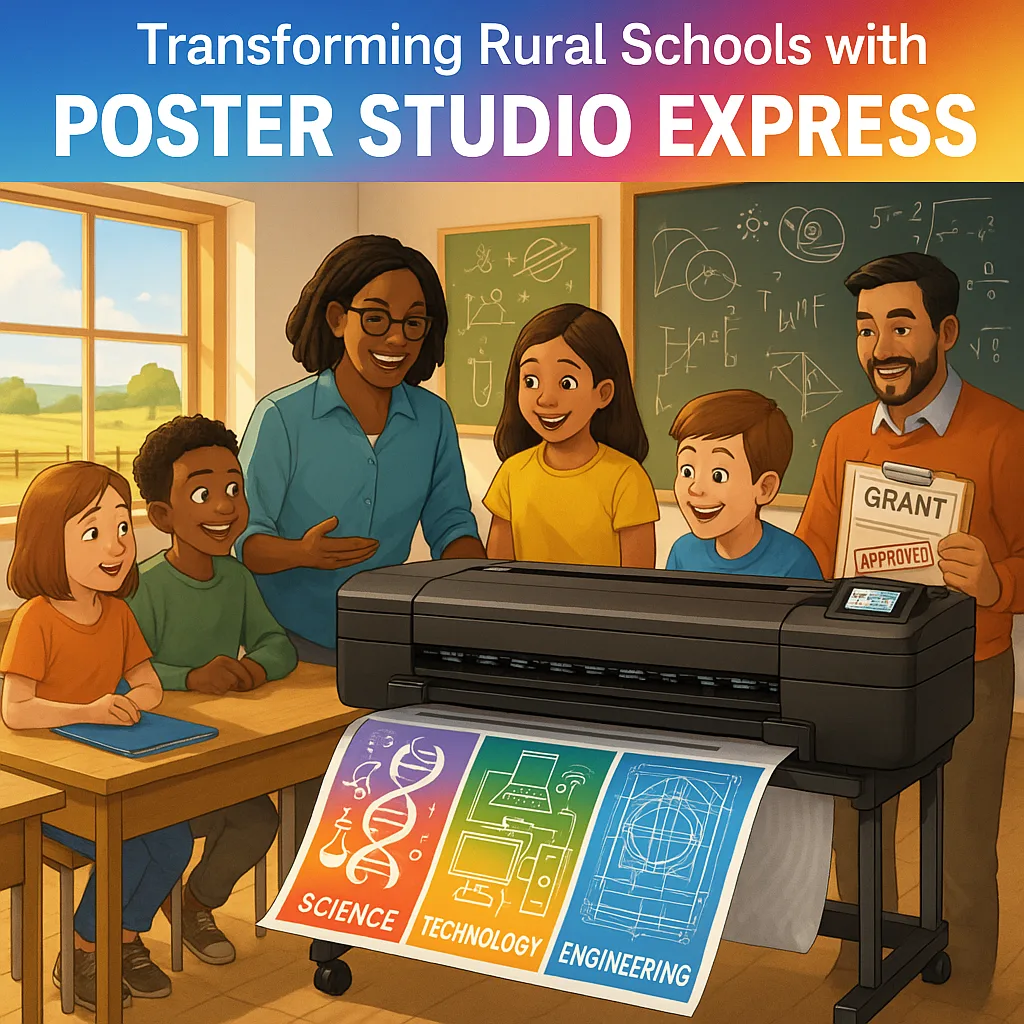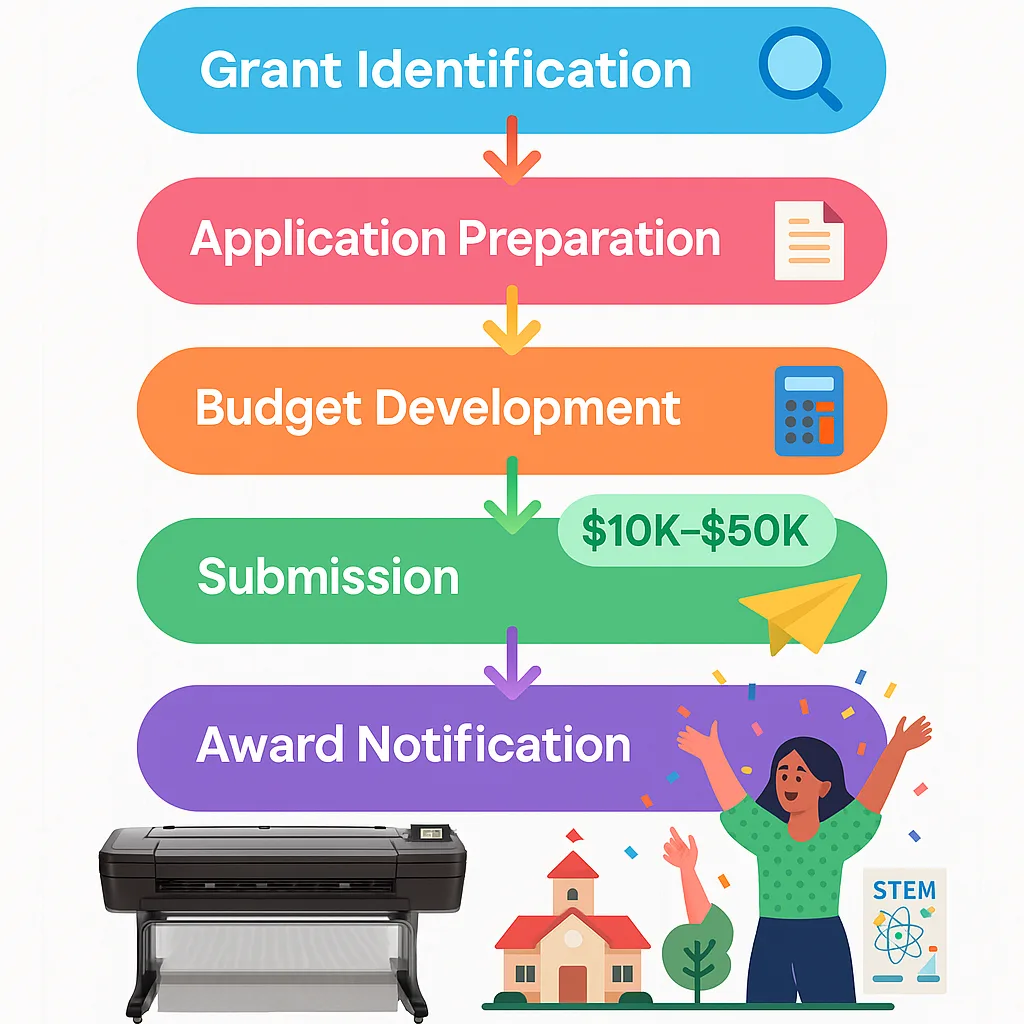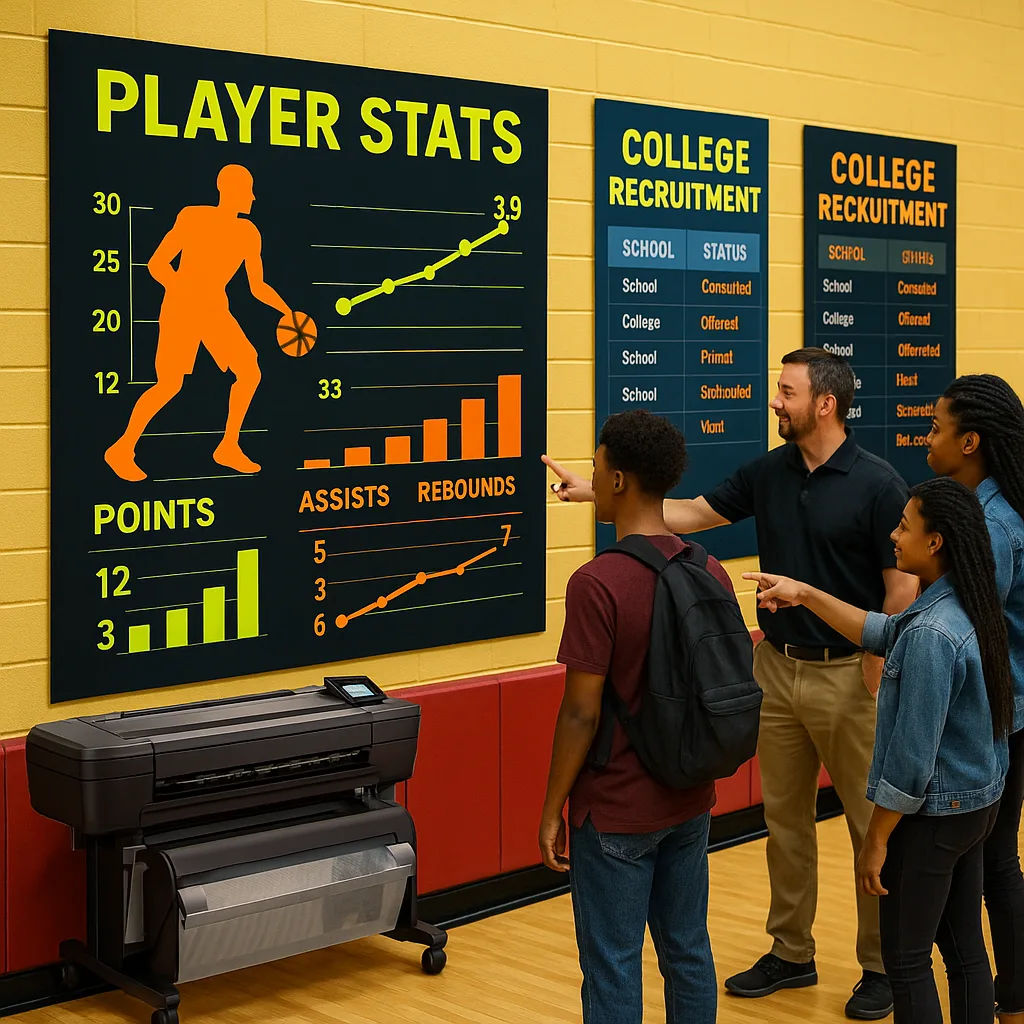
Rural STEM Grant Funding for Poster Maker Machines
Rural schools face unique challenges in securing STEM resources, yet specialized federal and state grant programs offer substantial funding specifically for visual learning technology. These overlooked opportunities can provide $10,000 to $50,000 for poster maker machines for schools rural STEM grants initiatives, transforming how educators deliver science, technology, engineering, and mathematics content.
Understanding Rural STEM Grant Landscapes
The federal government allocates billions annually for rural education initiatives, with STEM enhancement receiving priority status. However, many administrators remain unaware that visual learning tools, including poster maker machines for schools, qualify under multiple grant categories. Furthermore, state-level programs often mirror federal priorities while offering less competitive application pools.
According to the U.S. Department of Education’s Rural and Low-Income School Program, eligible districts can access formula grants ranging from $20,000 to $80,000 annually. Additionally, the National Science Foundation’s Advancing Informal STEM Learning program provides project-based funding up to $3 million for innovative educational approaches.

Federal Grant Programs for Poster Maker Machines for Schools Rural STEM Grants
Several federal programs explicitly support technology acquisition for STEM education in rural settings. Therefore, understanding each program’s requirements and priorities becomes essential for successful applications.
1. Rural Education Achievement Program (REAP)
REAP provides formula-based funding to rural districts serving fewer than 600 students. Consequently, these funds offer remarkable flexibility for technology purchases. Districts typically receive $20,000-$60,000 annually, with visual learning tools explicitly listed as allowable expenses.
Key Requirements:
- Average daily attendance under 600 students
- County population density below 10 persons per square mile
- All schools designated as rural by NCES locale codes
2. Title IV-A Student Support and Academic Enrichment Grants
Title IV-A allocations support well-rounded education, including STEM initiatives. Rural districts often receive $10,000-$30,000 specifically for technology infrastructure. Moreover, visual learning tools align perfectly with program objectives for enhancing student engagement.
State-Level Opportunities Often Overlooked
State education departments frequently administer STEM-specific grants with less competition than federal programs. For instance, California’s K-12 Strong Workforce Program allocates $150 million annually for career technical education, including visual communication tools. Similarly, Texas Education Agency’s Math/Science Partnership Grants provide up to $75,000 for innovative instructional materials.
Rural districts should investigate these state-specific programs:
- Innovation Grant Programs: 28 states offer competitive grants for educational technology ($5,000-$50,000)
- STEM Equipment Grants: 19 states provide dedicated funding for hands-on learning materials
- Rural Technology Initiative Funds: 14 states prioritize rural districts for technology infrastructure
Winning Proposal Templates for Poster Maker Machines for Schools Rural STEM Grants
Successful grant applications follow predictable patterns. Subsequently, using proven templates significantly increases approval rates. Here’s a framework that secured $35,000 for Riverside Elementary in rural Montana:
Executive Summary Template:
“[District name] requests $[amount] to acquire visual learning technology supporting STEM education across [number] rural schools. This investment will impact [number] students annually while reducing instructional material costs by [percentage] over five years.”
Needs Assessment Framework:
- Document current STEM resource limitations with specific data
- Calculate annual spending on outsourced visual materials
- Survey teacher needs for visual learning tools
- Analyze student performance gaps in STEM subjects
Grant Success Rate
When including visual learning tools in rural STEM proposals
Budget Justification
Click for winning budget frameworkProven Template
Equipment: $8,500
Supplies (3 years): $4,500
Training: $2,000
Total Request: $15,000
Success Stories: Rural Schools Winning Big
Real districts demonstrate how strategic grant applications transform STEM education through visual learning investments. Moreover, their experiences provide valuable insights for future applicants.
Pine Valley USD, Wyoming
Grant Amount: $42,000
Funding Source: NSF Advancing Informal STEM Learning
Equipment: Education Studio 36″ Duplicator Package A+
“The ability to create large-format visuals transformed our science labs. Students now design and print their own research posters, dramatically improving engagement and retention.” – Dr. Sarah Chen, STEM Coordinator
Mountain Springs Elementary, North Carolina
Grant Amount: $28,500
Funding Source: State Rural Technology Initiative
Equipment: Two Education Express 24 Desktop units
“We calculated saving $11,000 annually on outsourced printing. The grant paid for itself in under three years while giving teachers immediate access to custom materials.” – Principal Marcus Williams
Budget Justification Strategies
Grant reviewers scrutinize budget sections carefully. Therefore, presenting clear, justified costs becomes critical for approval. When proposing poster maker machine for schools cost within rural STEM grants, consider these proven strategies:
Year 1: Initial investment offset by eliminating vendor printing contracts
Year 2: 40% reduction in instructional material costs
Year 3: Break-even point achieved
Years 4-5: Net savings fund additional STEM resources
Include these line items in your budget narrative:
- Equipment costs: List specific models with educational pricing
- Supply calculations: Base on actual classroom usage data
- Professional development: Include lifetime design service value
- Warranty coverage: Emphasize 5-year protection reducing TCO
Implementation Timeline and Sustainability Planning
Grant reviewers favor proposals demonstrating long-term thinking. Consequently, including detailed implementation timelines and sustainability plans strengthens applications significantly. Consider this proven framework that helped secure funding for multiple rural districts:
Months 1-3: Foundation
- Equipment procurement
- Installation and setup
- Initial teacher training
- Pilot projects launch
Months 4-9: Integration
- Curriculum alignment
- Student design workshops
- Cross-curricular projects
- Community showcase events
Months 10-12: Expansion
- Assessment data collection
- Budget sustainability plan
- Teacher mentorship program
- Grant renewal preparation
Ready to Transform Your Rural STEM Program?
Join hundreds of rural schools that secured grant funding for visual learning technology. Our team provides comprehensive support throughout your grant journey.








